Basketry Hat Item Number: E2721-0 from the National Museum of Natural History
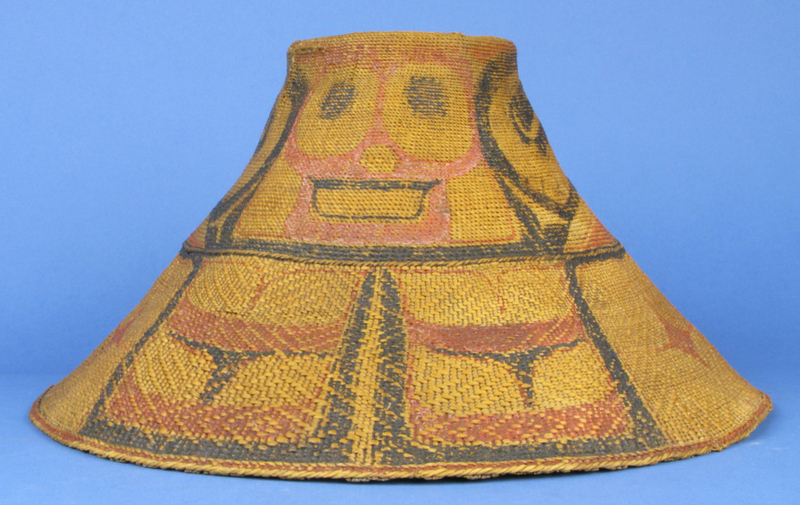
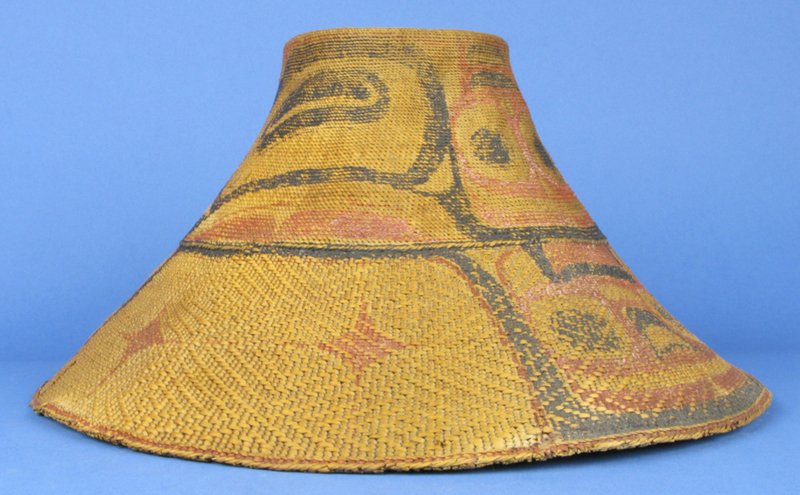
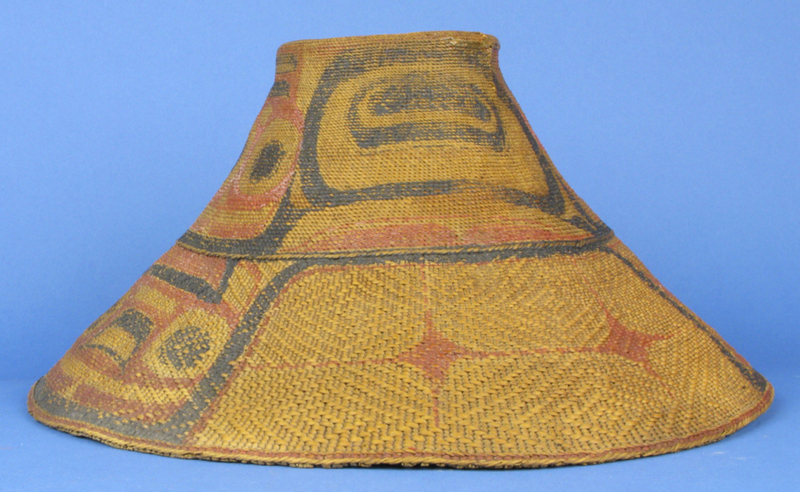
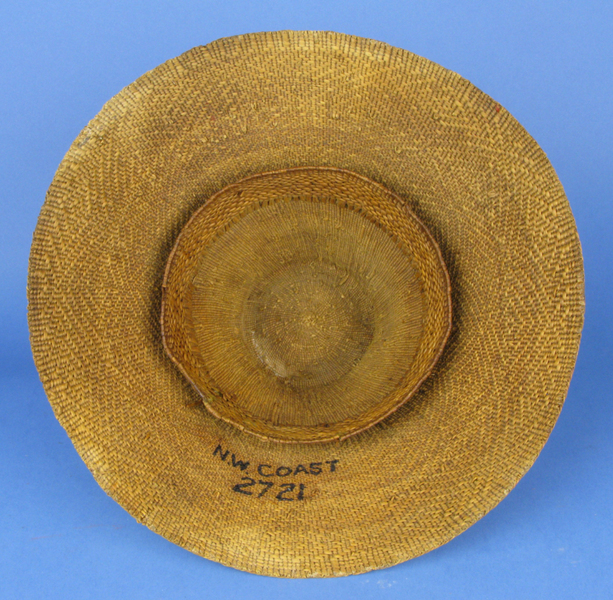


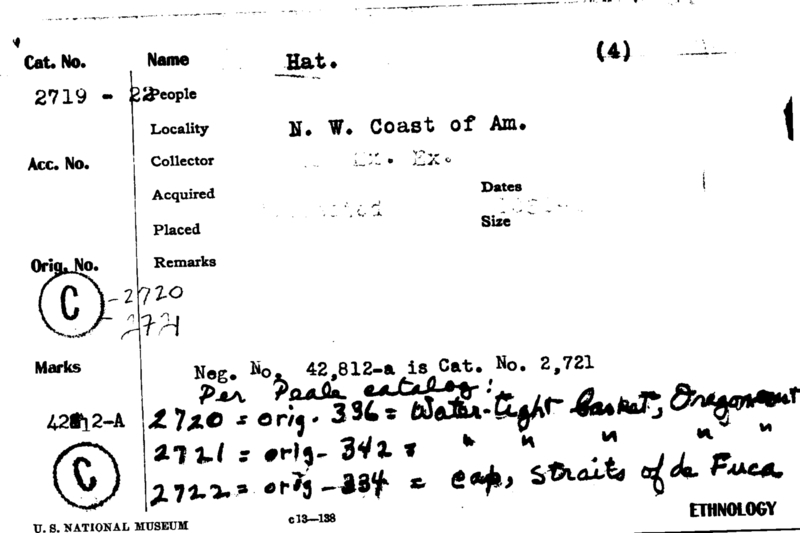
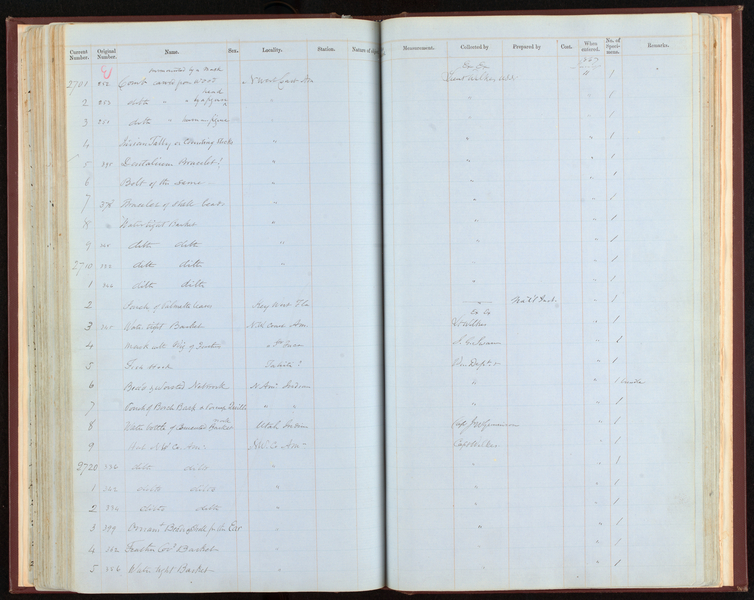
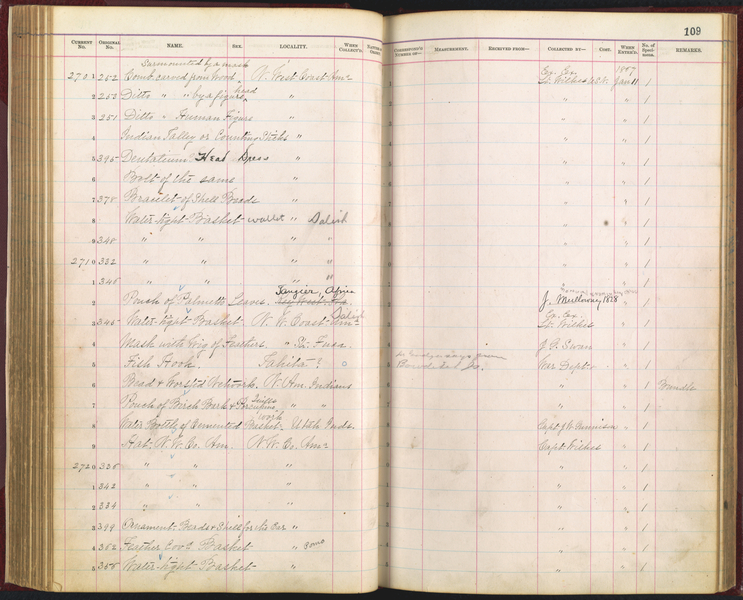
Notes
TIGHTLY WOVEN, SINGLE-PAIR WRAPPED TWINE CONICAL HAT, PROBABLY MADE OF SPRUCE ROOT. THE LOWER HALF OF THE HAT HAS A WOVEN DESIGN BY WEFT ON ONE AND TWO WARPS. THERE ARE PAINTED DECORATIONS IN GEOMETRIC AND ABSTRACT DESIGNS IN BLACK AND RED. THERE IS A CAP WOVEN ON THE INTERIOR OF THE HAT FOR A CLOSER FIT. EXHIBITED MAGNIFICENT VOYAGERS, NATIONAL MUSEUM OF NATURAL HISTORY, 1985-86. EXHIBITED SITES "MAGNIFICENT VOYAGERS," 1987-89.FROM CARD: "PER PEALE CATALOG: 2721 = ORIG. 342 = WATER-TIGHT BASKET, OREGON COAST."For small illustration see Hat 111, p. 221 in Glinsmann, Dawn. 2006. Northern Northwest Coast spruce root hats. Thesis (Ph. D.)--University of Washington, 2006. Glinsmann identifies as of Haida manufacture. Hat is also illustrated Fig. 166, p. 149 and described p. 149-150 in Glinsmann: "... it has upward jogs, 3-strand Z-twining on the top and crown, and a mamatsiki brim pattern separated from the crown by 4-string S-twine on the brim turn. The ending is a stitched chevron, the most ubiquitous on the coast by the end of the nineteenth century. This, however, is that technique's debut, for until 1841 it was only seen either incorporating warps ... or running in a right-to-left direction. This technique - without using the warps and in a left-to-right direction - becomes the "classic" Haida ending. The formline painting has fully developed primary and tertiary lines that bespeak mid-nineteenth century Haida design. Also significant is the distribution of the design, which is not limited to the crown, but extends over the brim as well."Provenience note, in 1841 Oregon Territory encompassed the land from Russian Alaska to Spanish California and from the Pacific to the Continental Divide. The U.S. Exploring Expedition did not go to Canada, but did reach Oregon Territory in 1841, and carried out a hydrographic survey of the Columbia River from its mouth to the Cascades, as well as doing some surveying inland.They had dealings with Hudson's Bay Company staff during that time, and it is probable that the HBC is the source of a number of the Northwest Coast artifacts collected by the expedition.
Item History
- Made in USA
- Collected in USA between 1838 and 1842
- Received from United States Exploring Expedition during 1858
What
- Name
- Basketry Hat
- Identification Number
- E2721-0
- Type of Item
- hat
Who
- Culture
- Haida ?
- Received from
- United States Exploring Expedition
Where
- Holding Institution
- National Museum of Natural History
- Made in
- USA
- Collected in
- USA
When
- Collection Date
- between 1838 and 1842
- Acquisition Date
- during 1858
Other
- Accession Number
- 66A00050